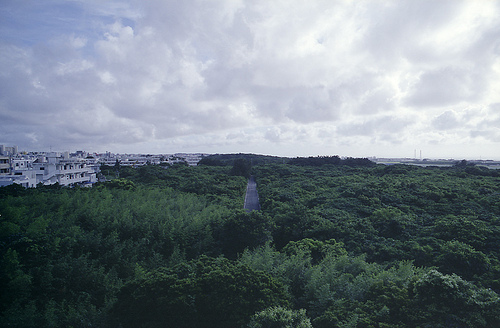Peace
What the bones of those who died in the war tell us
2010.08.26 Mitsuko Iwai

Futenma - The Life with The Military Base 16:Creative Commons,Some Rights Reserved,Photo by Ojo de Cineasta
The Sakima Art Museum in Ginowan City, Okinawa Prefecture, will be hosting the exhibition, "Honekarano Ikusayu (The world of war reflected in bones)" from August 11-23.
People who actually experienced the war are aging, but even today, 65 years since the end of the war, remains of those who died in the war are being discovered in Okinawa from underneath the soil.
Since last year, Mr. Toyomitsu Higa, a photographer from Yomitanson who has taken pictures of "Okinawa" over years, has been taking photographs of the remains and belongings of the Japanese soldiers found in Naha and Urasoe cities. Approximately 60 photographs he has taken will be on display at the exhibition.
The collection of photographs on exhibit includes a photograph of a mummified brain that was found inside a skull. The brochure of the exhibitions states that, "This 'brain' is clearly telling us that many things about the Battle of Okinawa still remain unsolved." Many Okinawans as well as other Japanese and American soldiers died in the fierce ground battle. Many thoughts - bequeathing the memories of the land, the current military base issues - run through my head when I think about this.
The Sakima Art Museum is located next to the U.S. Marine Corps Air Station Futenma. Mr. Michio Sakima, owner and director of the museum, established the museum in 1994 on a piece of land that used to belong to his ancestor, which he regained from the Marine Corps base. He sincerely hopes to offer a calm and quiet "place for reflection" in Okinawa, which still suffers from the war.
The media has been discussing the issues regarding the military base extensively, but this made me think once again about whether such media coverage really reflects the true feelings and issues that people in Okinawa are facing.
Related URL/media
![]()









